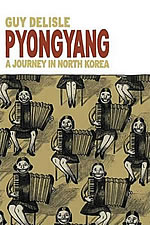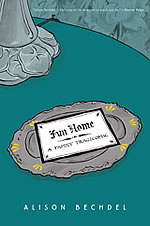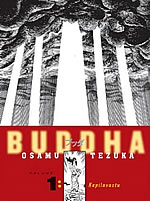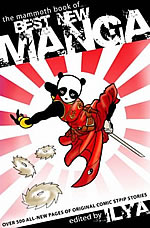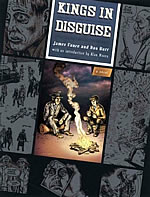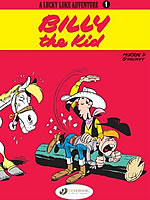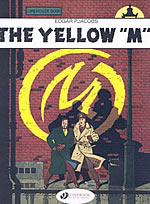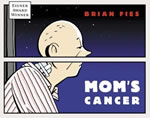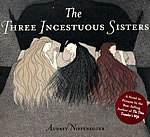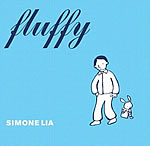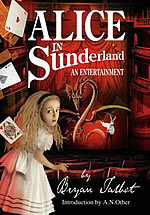Graphic Novels In Bookshops:
The Second Golden Age Of Comics
On Tuesday November 6th, 2007, the 2007 Comica Festival came to its grand finale with the launch at the ICA of two powerful graphic novels about the Iraq War from publishers new to this burgeoning field. Brits Sean Michael Wilson and Lee O’Connor created Iraq: Operation Corporate Takeover, a present-day, human-scale docudrama on how Western companies are profiteering from the occupation, for campaigning charity War on Want. New Yorkers Anthony Lappé and Dan Goldman, meanwhile, project the conflict, media frenzy and military technology to the year 2011 in the scathingly provocative satire Shooting War from Weidenfeld & Nicolson. As more publishers debut in the comics medium, how will high-street booksellers respond?

Dan Goldman’s special London UK tour poster, signed limited edition of 250, shows Shooting War‘s reporter anti-hero Jimmy Burns in US-
occupied London. Order a copy here.
From highbrow to lowbrow and every brow in-between, from musclebound American superheroics to multi-volume manga epics from Japan, from European bande dessinée albums to art-objects and memoirs, reportage and satire, graphic novels have been hyped for so long as the next big thing, has their time now finally come? Sales boosted by manga may not be soaring quite as meteorically, but still show steady growth, encouraging more publishers on both sides of the Atlantic, including several majors, to sign up their first titles or expand their lines. So you might think that by now booksellers and bookbuyers would have understood and embraced graphic novels as a valid medium in their own right.
Dan Franklin, publisher at Jonathan Cape, leaders at the literary forefront of graphic novels, may be buoyant, bullish even, that the market is growing all the time, so much so that he is expanding his line from around four to twelve titles a year, but he is under no illusions. “There’s still a long way to go and massive scepticism to overcome at most of the big bookselling chains.”
Across British culture, that “massive scepticism”, rooted in blissful, perhaps wilful ignorance of and prejudice towards comics, seems stubbornly persistent. For example, as the opening question in a recent ‘You Ask The Questions’ vox-pop interview in The Independent (9 October, 2006), Charles Saatchi was asked, “Your first wife is on record as saying that she only ever saw you reading comic books. Have you ever actually read a book? And if so, what was it?” Saatchi knew what the questioner really meant and responded sharply, “Are you asking if I’m thick?”
This common assumption that you must be thick (and probably male) to read comics seems deeply ingrained in Britain. Comics or graphic novels, as they have been labelled when in book form, may now be allotted a section in many bookshops and libraries, win literary plaudits and prizes, and earn Raymond Briggs and Posy Simmonds membership in the Royal Society Of Literature, but the stigma persists of their being essentially juvenile, crass, subliterate, stereotyped and irredeemable.
It’s hard to think of another medium that has become so widely and perversely misunderstood. In his interview at the ICA’s Comica Festival in October 2006 with Guy Delisle, creator of a chilling cartoon travelogue in the inaccessible North Korean capital Pyongyang, the author Michel Faber pointed out that we would never expect every new sophisticated film to be introduced by a complete history and verification of cinema’s achievements. When it comes to graphic novels, on the other hand, each fresh, intriguing work that now gets attention seems to need explanation and justification to establish its pedigree. What probably lies behind this constant starting-from-square-one is the fact that in cinema, theatre, fiction, music or painting, for instance, the media and the public usually have some broad awareness of at least a few of the principal geniuses and their masterpieces that founded and shaped these fields and of their significant contemporary equivalents. Even in animation, almost everyone could name Walt Disney and Matt Groening. Not only are the masters and classics of comics past and present little known, but many people have made up their minds about the medium based only on their limited, negative associations with it.
A little knowledge can help a bookseller transform how successfully their shop sells graphic novels. Joe Gordon at the specialist comic shop chain Forbidden Planet International used to work for Waterstones, where he built up a graphic novel section on his own initiative “until it regularly turned over more than larger sections like Classics or Poetry. I was selling more graphic novels than all the other Scottish branches put together because I was making the effort. And that meant customers kept coming back because they clocked it was being run by someone into it, which is always a draw for me as a customer too.”
Benjamin Lovegrove has seen similar success looking after Foyles’ section in a prime ground-floor location. “Primarily, we categorise by publisher (unlike the rest of Foyles which is categorised A-Z by author). Therefore a casual reader who has read something published by say Fantagraphics, Top Shelf or Drawn & Quarterly can revisit that area and expect to find a similar product. At the front we make sure there are face-outs of popular titles or those we love and want to recommend. This is incredibly effective in terms of sales. We also categorise by personality, eg Clowes or Ware, because people’s purchases can be influenced by the popularity and status of an author. While we are concentrating on more highbrow titles such as David B’s Epileptic, Alison Bechdel’s Fun Home and staples such as Maus and Persepolis, we are not scornful of more mainstream titles. Recently we have discovered the popularity of the Marvel Essentials series which appeal to an older market revisiting their youth and younger readers alike now that superheroes are cool in movies again.” Marvel’s pantheon are available from Panini, while Titan Books cover veterans Superman, Batman and more recent hits like Hellboy.
Manga is what is driving Blackwells boom in Charing Cross Road according to Marcus Gipps. “We were in on the ground floor of this new market early in 2005. Over the first eight months the section mushroomed from just six titles on half a shelf to thirty shelves. Over the past year it’s grown further to forty shelves.” Manga’s UK market leaders, the independent TokyoPop, are being joined by more publishers here. First up were Gollancz, whose Simon bton feels “The mainstream booktrade seem to be happy that manga is here to stay, but the market is still adapting to the range of the titles out there and the frequency with which they are appearing. Remember that manga backlists grow very quickly!” bton sees their current potential audience as “mainly but not exclusively a younger market, but that itself is wide.” Recognising this, others entering the manga arena include Random House’s bright, burgeoning Tanoshimi line bought in from Del Rey and Kodansha, and Bloomsbury, Walker Books, Mammoth, Sweatdrop and SelfMadeHero all originating manga. Publishers also anticipate that these loyal manga readers will grow up and want slightly more mature fare, now provided by Fanfare/Ponent Mon‘s upmarket literary range and Harper Collins’ 8-volume Buddha biography, hailed as a Telegraph “novel of the week”.
Peter Duncan at Mammoth Books is looking beyond manga for his project. “Basically we’ll be rolling out graphic-equivalents of many of our existing Mammoth bestsellers. So expect to see from us plenty of all-new graphic annual collections complementing our established annuals like Best New Science Fiction, Best New Horror, etc, as well as one-off collections featuring a mix of classic gems and original new work, like upcoming The Mammoth Book of Best War Comics.”
The sheer diversity and quality of graphic novels looks set to continue to broaden, as more publishers step into field, but where do you start and what do you buy? W.W. Norton went for proven masterpieces such as the late Will Eisner’s extensive library and reviving playwright James Vance’s Kings In Disguise, although Norton have also boldly commissioned Crumb to adapt the Book Of Genesis. Harper Collins are bringing in charming American all-ages fantasies such as Jeff Smith’s Bone and Matteis and Ploog’s Abadazad, shrewdly priced and sized to fit alongside manga but in full colour. Building on the perennial popularity of Tintin and Asterix, Olivier Cadic at Cinebook is championing proven multi-million sellers from France and Belgium, from René Goscinny’s sharp-shooting cowboy Lucky Luke to British detectives Blake & Mortimer by Hergé‘s brilliant collaborator Edgar Jacobs.
Over at Headline, Piers Blofeld can reveal only that “Our plans are still at an early stage, but the market will I think continue to grow and I would be looking to originate titles.” Others have found ready-made properties online, such as Brian Fie’s internet memoir Mom’s Cancer from Abrams. At Weidenfeld & Nicholson, Kelly Falconer explains “I have kept my head down, biding time, all the while searching for one very good novel. When I saw Anthony Lappé‘s and Dan Goldman’s webcomic Shooting War, I knew it was ‘the one’, not only because of the story, which is compelling, disarmingly funny, and very well-told, but also because of its mix of journalism, comics and graphic design, which is something wholly 21st century and special.”
While Jonathan Cape continue to buy in from abroad, importing the Canadian Seth’s Wimbledon Green and American novelist Audrey Niffenegger’s “visual novels” among others, finding homegrown projects is equally important for Dan Franklin. “I am starting to see interesting work from British authors, Simone Lia’s Fluffy and Bryan Talbot’s Alice In Sunderland out next February being good examples. Hannah Berry in Brighton is working away on her book, which promises to be wonderful. Posy Simmond’s Tamara Drewe will be out next autumn, I’m expecting Raymond Briggs’ new book soon, and I’ve just bought a wordless graphic novel by Shirley Hughes, the much loved children’s author.”
Tying in with successful writers, hit novels and movies is another formula that can sometimes click. The animated adaptation of Philip K. Dick’s A Scanner Darkly, directed by Richard Linklater, lent itself perfectly to being converted into comics form from Dick’s publisher Gollancz. The surge of graphic novel-based films carries on unabated, from superhero icons Spider-Man and Ghost Rider to Darren Aronoksky’s The Fountain, Kevin Smith’s cult nerds Clerks, or 300, Frank Miller’s dynamic recreation of the battle of Thermopylae. With plenty of successful novelists writing for Harper Collins, Emma Coode envisages “one way to progress our list is to concentrate on producing original graphic novels using the many literary gems we have on our lists as content.”
Kelly Falconer is convinced that “graphic art has begun to permeate public consciousness. Once we become accustomed to seeing this form of media, the style becomes more familiar and chic, even. When I was in Japan three years ago, I saw graphic novels everywhere, and realised it was only a matter of time before the trend moved its way westwards. Dan Goldman of Shooting War told me that in New York, they are truly experiencing the second Golden Age of Comics, this time with literary credibility. I think we in the UK will follow this trend and begin to contribute to this emerging literary form.” Flying in the face of any massive scepticism, all the signs are that the graphic novel is becoming established here as a medium and market whose time has come.
Posted: November 11, 2007The original version of this article appeared in October 2006 in The Bookseller, the essential business information publication for the book industry for over 140 years.















